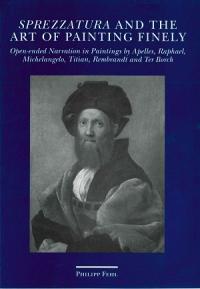Sprezzatura and the Art of Painting Finely. Open-ended Narration in Paintings by Apelles, Raphael, Michelangelo, Titian, Rembrandt and Ter Borch: The Ninth Horst Gerson Lecture, held on November 6, 1997
Synopsis
The Ninth Gerson Lecture held in memory of Horst Gerson (1907-1978) in the Aula of the University of Groningen on the 6th of November 1997.
The literature of classical antiquity is full of stories that tell us that too much care in finishing a picture is counter-productive. There is an invisible point towards which you must reach but beyond which you must not go. You can't be fine enough in perfecting your work but if you try too hard you are no longer fine, your picture becomes artificial just where you wanted to arrive at perfection in the representation of nature. Your piece will be labored and therefore look unnatural: it will no longer be, as nature always is, free. Apelles vaunted that his works had a certain grace, an ease and that in that quality, in it alone, he was superior to all his famous fellow painters. He knew 'when to take his hand off his picture' and thus, by leaving it in a manner unfinished, he finished it to perfection. His famous dark varnish made his pictures shine in relative darkness more appropriately brightly and hid, perhaps, with a more completely accurate fineness what was to finely finished to do justice to truth with the semblance of a new and accurate and comforting fineness. Thus he could paint what could not be painted, 'thunder, lightning, and lightning flashes'. The fleeting apparitions became definite because he painted them fleetingly and the crash of thunder could be heard as an effect of what he made visible. Where the image was not enough the imagination supplied what was missing.
Downloads
Total downloads: 382

Downloads
Published
Series
Categories
License

This work is licensed under a Creative Commons Attribution-NonCommercial-NoDerivatives 4.0 International License.



